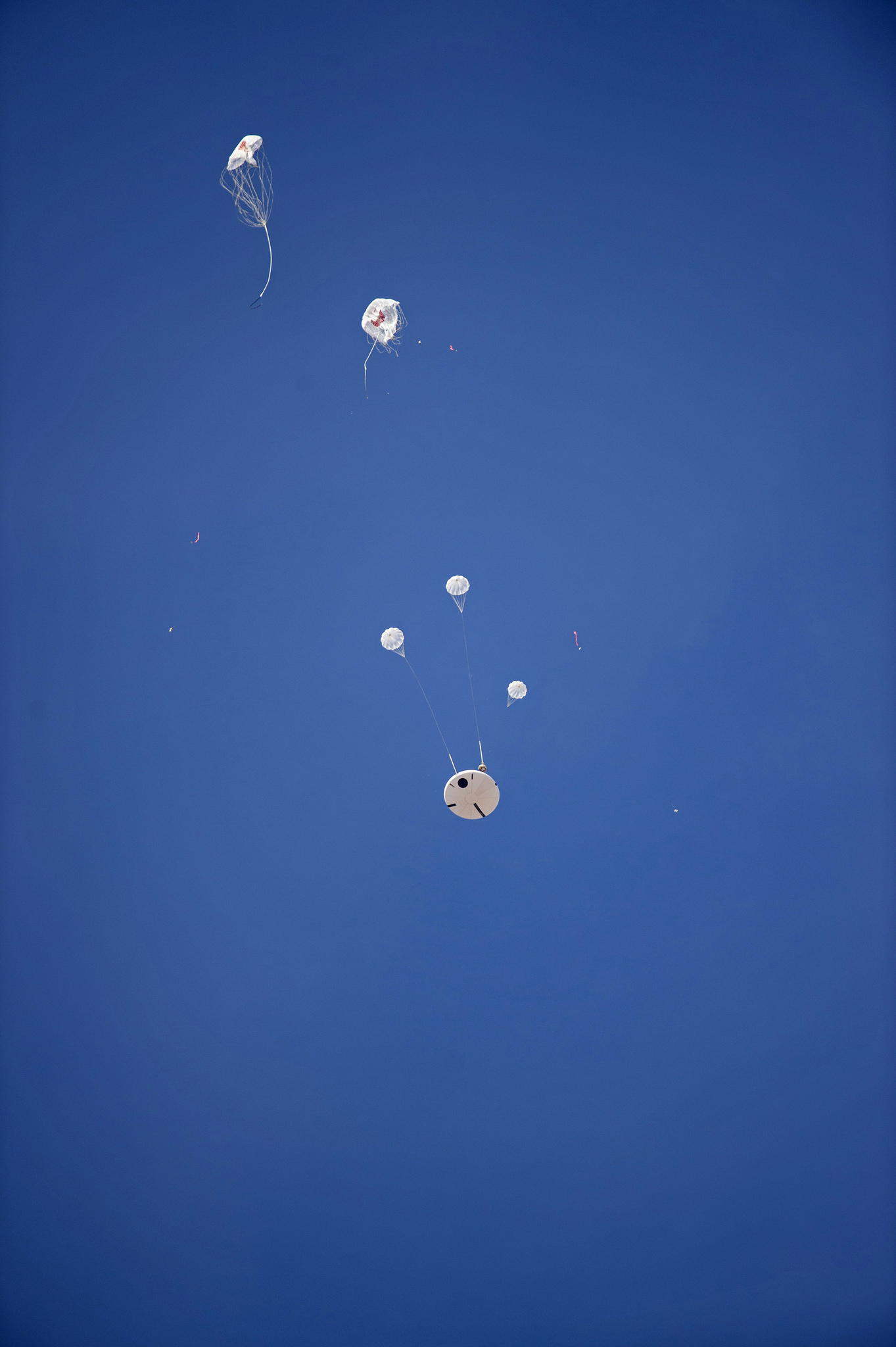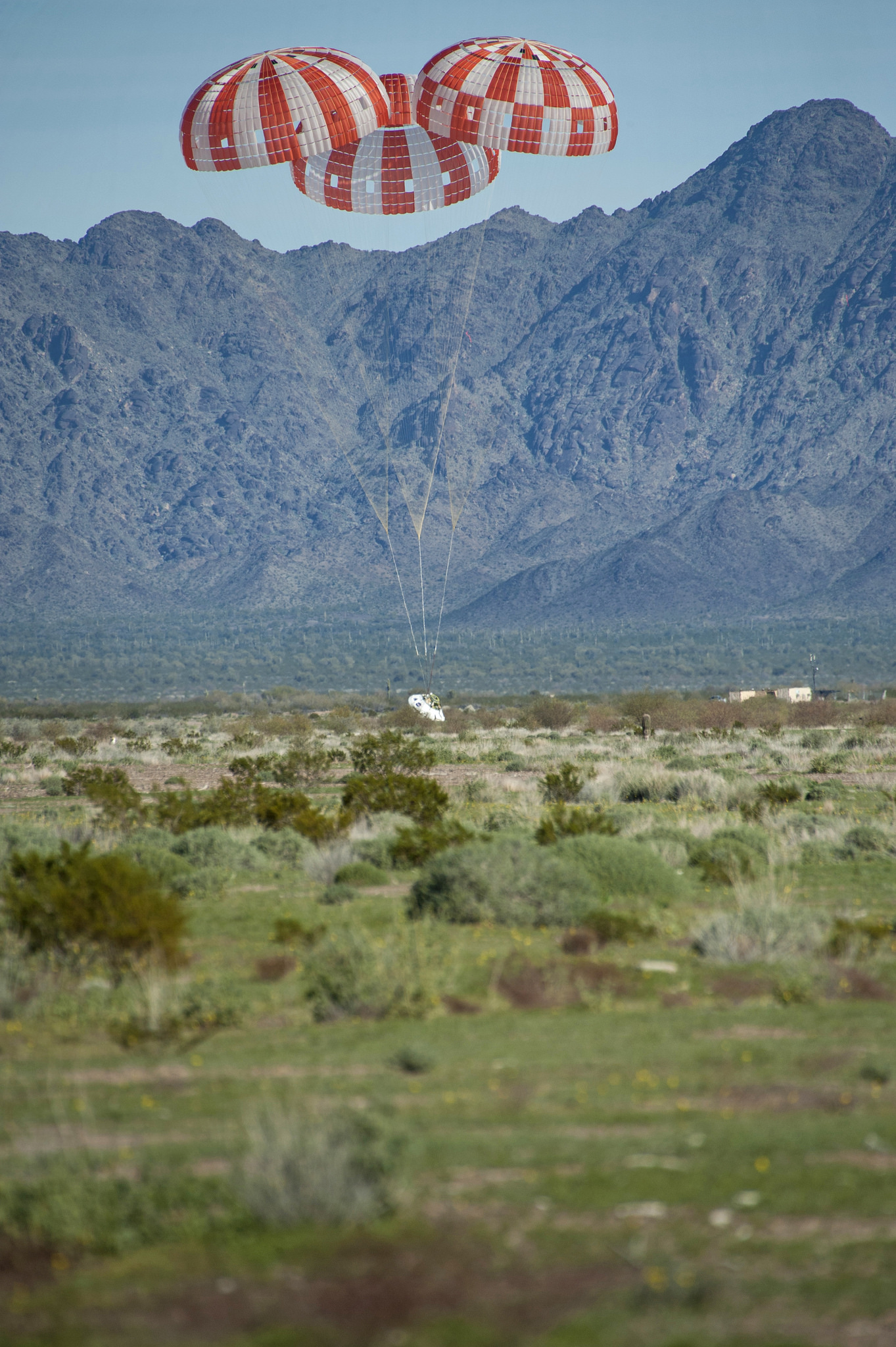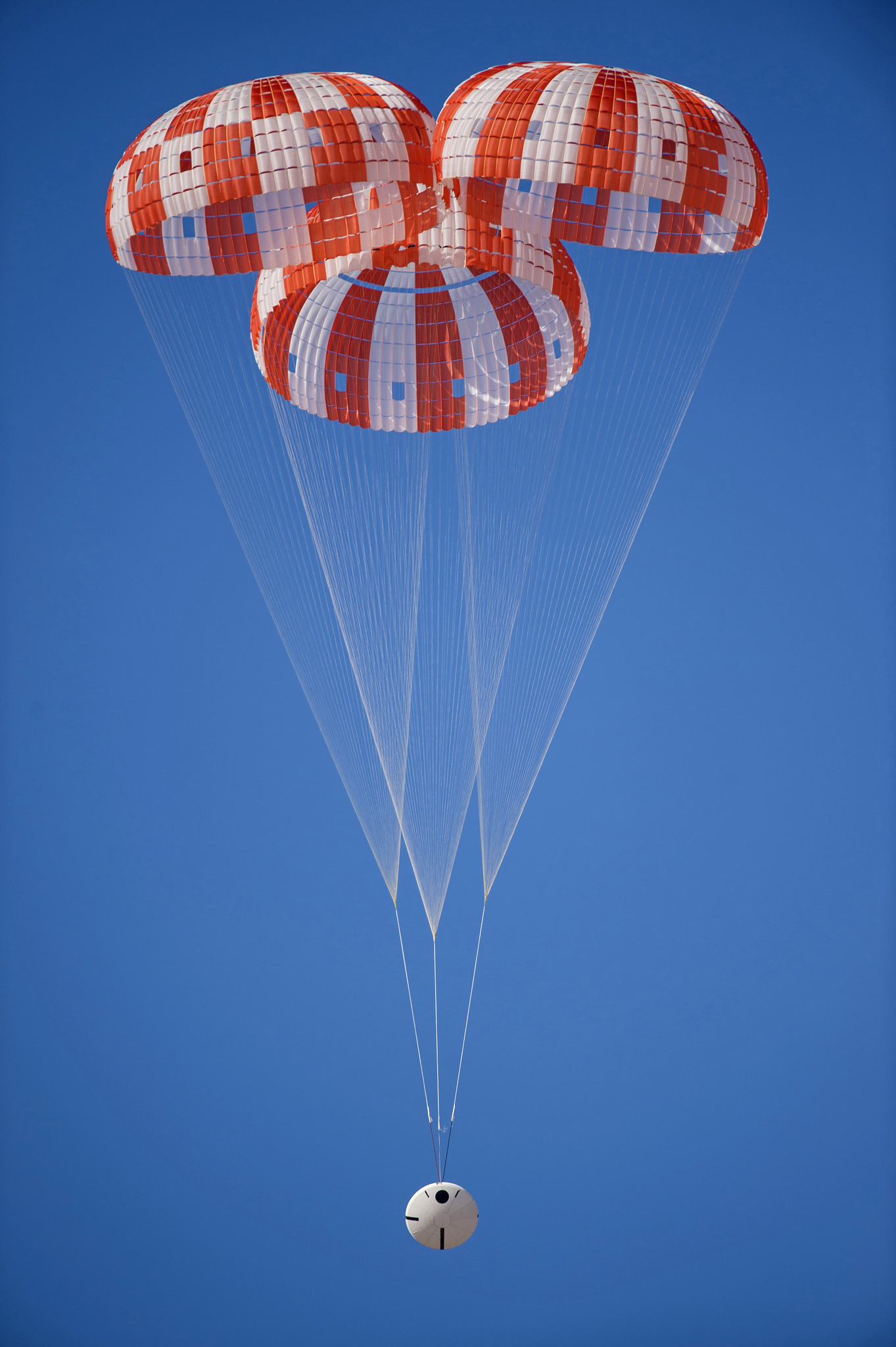NASA's Orion Space Capsule Prototype Aces Parachute Drop Test

NASA successfully completed a test of the Orion space capsule's parachute system yesterday (March 8) in Arizona.
Wednesday's trial run was the second of eight drops that are designed to test the parachute system in various scenarios. This test simulated an abort sequence, which might occur if something went wrong with the rocket launching an Orion spacecraft into space, and the capsule needed to be ejected.
Above the U.S. Army's Yuma Proving Ground in Arizona, a model of Orion was dropped from a C-17 aircraft flying at an altitude of 25,000 feet, according to a statement from NASA. The drop took place at 9:45 a.m. local time (11:45 a.m. EST/1645 GMT), about 2 hours later than scheduled, and lasted about 4 minutes, a NASA representative told Space.com. [NASA's Orion Space Capsule Parachute in Photos]
Video footage of the capsule shows it hurtling toward the ground at a terrifying speed, trailed by two gray drogue parachutes. Once the candy-cane-striped main parachutes open, the capsule slows down significantly. The craft hits the ground on its side, rather than directly onto its flat bottom, and some material appear to break off the side.

"This was a very successful test for the team demonstrating the parachute performance for an ascent abort mode, critical to the safety of the crew for a safe landing," a NASA representative told Space.com in an email.
During this kind of test, the Orion model travels at the relatively slow speed of about 130 mph (210 km/h); during re-entry from space, the capsule may reach speeds of about 310 mph (500 km/h), according to NASA. The parachute system can slow the space capsule to just 20 mph (32 km/h). Orion has a total of 11 parachutes, in four groups; only two of the parachute groups were deployed during Wednesday's test: the two drogue parachutes and the three main parachutes.
Orion is NASA's new spacecraft for ferrying humans to deep-space destinations. Unlike the space shuttle, which was designed to glide back down to Earth after a trip to space, Orion relies on a parachute system to lower it back to Earth. Orion has undergone one uncrewed test flight and is scheduled for a second uncrewed flight in 2019; but NASA is but NASA is now investigating the possibility of moving directly into a crewed flight.
Get the Space.com Newsletter
Breaking space news, the latest updates on rocket launches, skywatching events and more!

Follow Calla Cofield @callacofield.Follow us @Spacedotcom, Facebook and Google+. Original article on Space.com.
Join our Space Forums to keep talking space on the latest missions, night sky and more! And if you have a news tip, correction or comment, let us know at: community@space.com.

Calla Cofield joined Space.com's crew in October 2014. She enjoys writing about black holes, exploding stars, ripples in space-time, science in comic books, and all the mysteries of the cosmos. Prior to joining Space.com Calla worked as a freelance writer, with her work appearing in APS News, Symmetry magazine, Scientific American, Nature News, Physics World, and others. From 2010 to 2014 she was a producer for The Physics Central Podcast. Previously, Calla worked at the American Museum of Natural History in New York City (hands down the best office building ever) and SLAC National Accelerator Laboratory in California. Calla studied physics at the University of Massachusetts, Amherst and is originally from Sandy, Utah. In 2018, Calla left Space.com to join NASA's Jet Propulsion Laboratory media team where she oversees astronomy, physics, exoplanets and the Cold Atom Lab mission. She has been underground at three of the largest particle accelerators in the world and would really like to know what the heck dark matter is. Contact Calla via: E-Mail – Twitter









